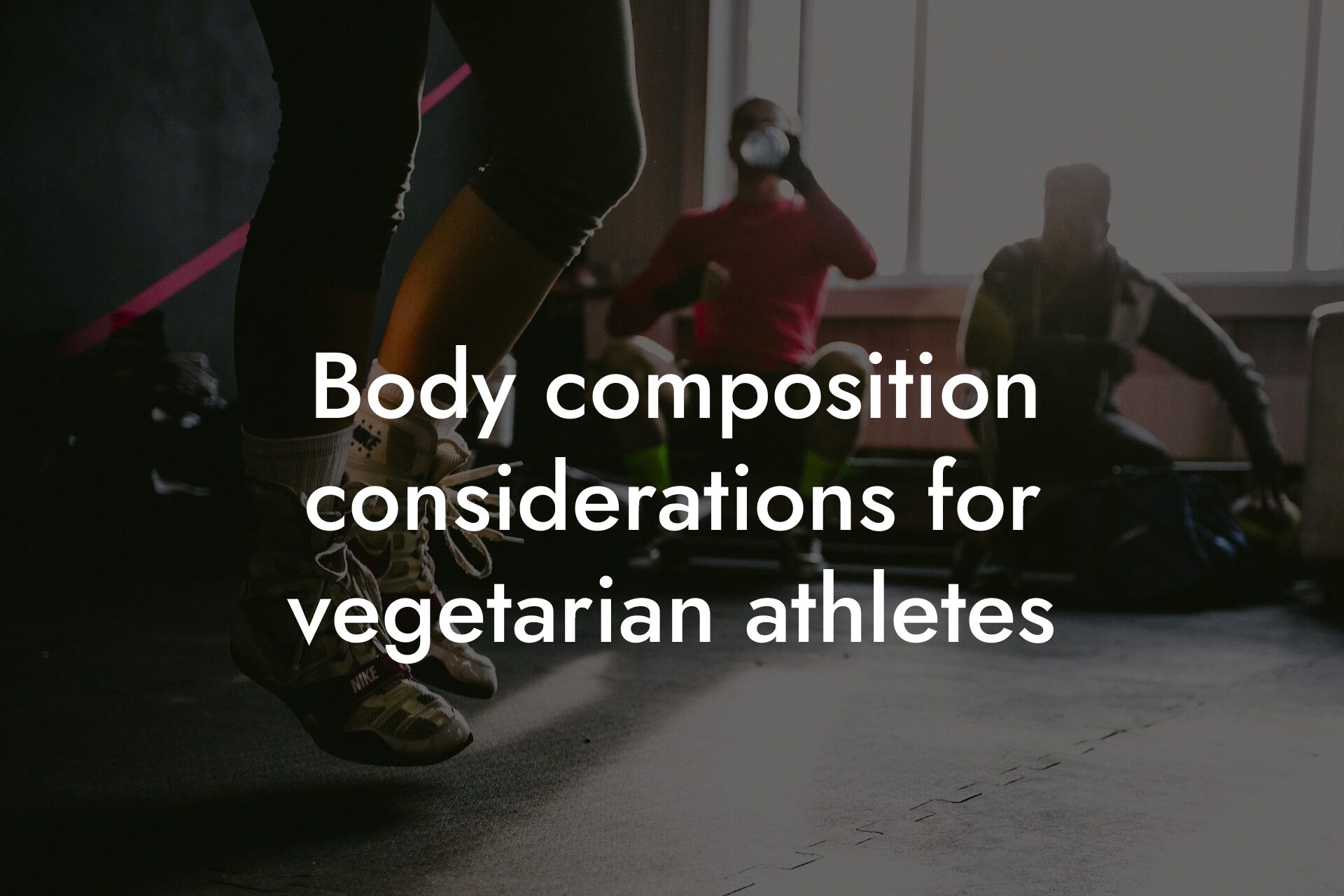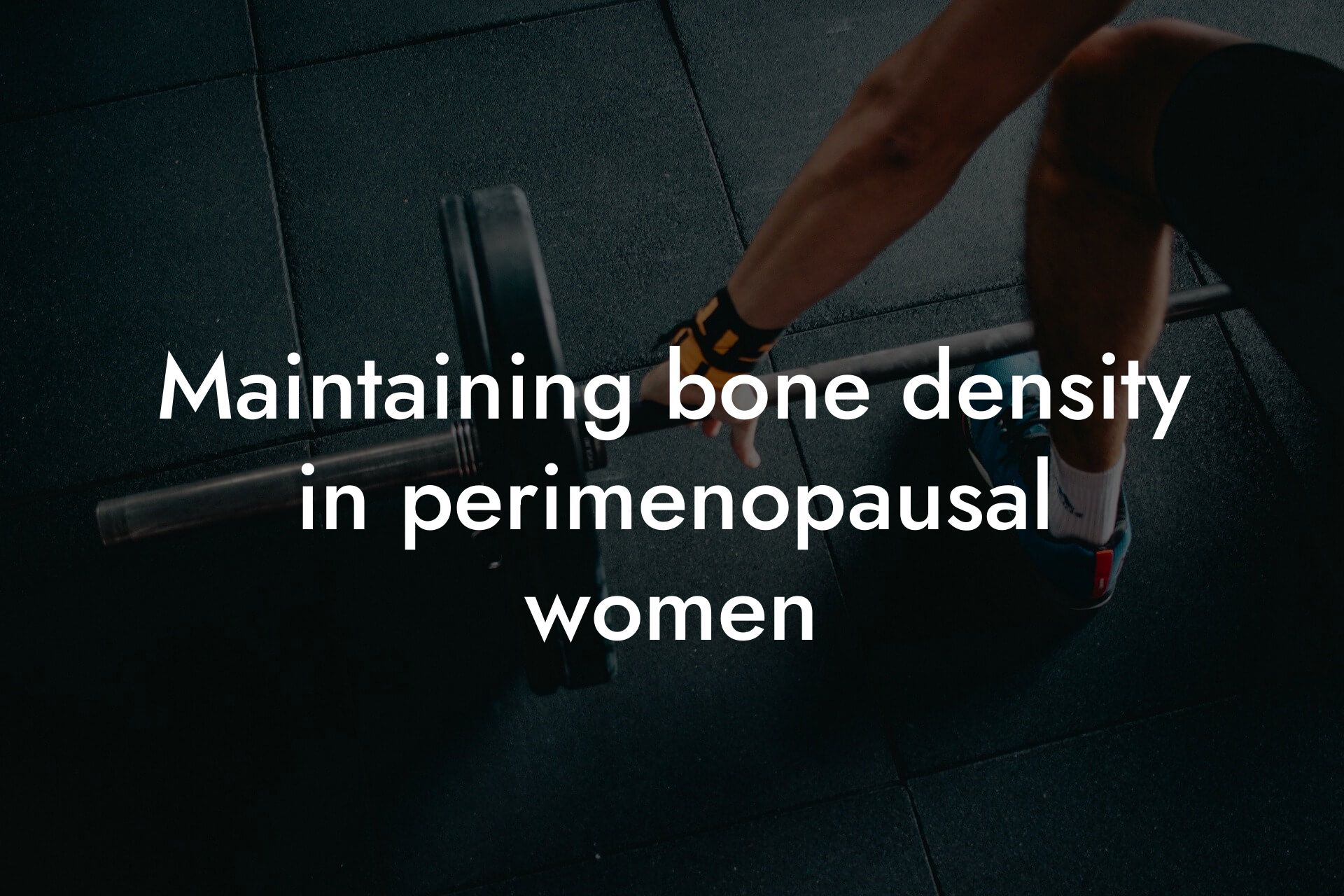As a high-earning professional, you understand the importance of maintaining a healthy and aesthetically pleasing physique. However, what may be considered an ideal body composition in one culture may not be the same in another. At Tano Performance Group, we recognize the significance of cultural differences in shaping body composition goals and their impact on our clients' overall well-being. In this article, we will delve into the world of cultural diversity and explore how it influences body composition goals, and what it means for you as a professional seeking to optimize your physical appearance.
Table of Contents
- The Influence of Cultural Background on Body Image
- The Role of Socioeconomic Status
- Body Composition Goals Across Cultures
- The Impact of Cultural Differences on Body Composition Measurement
- Challenges in Achieving Body Composition Goals Across Cultures
- Strategies for Achieving Body Composition Goals Across Cultures
- Frequently Asked Questions
The Influence of Cultural Background on Body Image
Body image is a complex and multifaceted concept that is deeply rooted in cultural values and beliefs. Different cultures place varying degrees of emphasis on physical appearance, and these values can significantly impact an individual's body composition goals. For instance, in some cultures, a curvier figure is seen as a symbol of beauty and fertility, while in others, a leaner physique is considered more desirable. Understanding these cultural nuances is essential in developing a personalized approach to body composition goals.
The Role of Socioeconomic Status
Socioeconomic status (SES) also plays a significant role in shaping body composition goals. In many cultures, a higher SES is associated with a leaner, more athletic physique, while a lower SES is often linked to a heavier, more curvaceous figure. This phenomenon is not limited to Western cultures; in many African and Asian societies, a plumper figure is seen as a symbol of wealth and prosperity. As a high-earning professional, it's essential to recognize how your SES may influence your body composition goals and adjust your approach accordingly.
Body Composition Goals Across Cultures
When it comes to body composition goals, different cultures have distinct preferences. For example:
In Western cultures, such as the United States and Europe, the ideal body composition goal is often a lean, athletic physique with low body fat percentage.
In many African cultures, a curvier figure is seen as desirable, with a focus on building muscle mass and increasing body fat percentage.
In some Asian cultures, such as in Japan and China, a slender, petite physique is considered ideal, with a focus on reducing body fat percentage and increasing muscle tone.
Understanding these cultural differences is crucial in developing a personalized approach to body composition goals that aligns with your unique cultural background and preferences.
The Impact of Cultural Differences on Body Composition Measurement
When it comes to measuring body composition, cultural differences can also play a significant role. Different cultures may have varying standards for body composition measurement, and what may be considered healthy in one culture may not be the same in another. For example:
In Western cultures, body mass index (BMI) is often used as a measure of body composition, with a BMI of 18.5-24.9 considered normal.
In some African cultures, skinfold measurements are used to assess body fat percentage, with a focus on building muscle mass and increasing body fat percentage.
In some Asian cultures, bioelectrical impedance analysis (BIA) is used to measure body fat percentage, with a focus on reducing body fat percentage and increasing muscle tone.
At Tano Performance Group, we use DEXA (Dual-Energy X-ray Absorptiometry) scanning to provide a comprehensive body composition analysis, taking into account cultural differences and individual preferences.
Challenges in Achieving Body Composition Goals Across Cultures
Achieving body composition goals can be challenging, especially when cultural differences are taken into account. Some common challenges include:
Lack of cultural sensitivity: Many fitness professionals and health experts may not fully understand the cultural nuances of body composition goals, leading to ineffective or even harmful advice.
Unrealistic expectations: Cultural ideals of beauty and physical appearance can create unrealistic expectations, leading to frustration and disappointment.
Limited access to resources: In some cultures, access to fitness facilities, healthy food options, and healthcare services may be limited, making it difficult to achieve body composition goals.
At Tano Performance Group, we recognize these challenges and provide personalized guidance and support to help you overcome them and achieve your body composition goals.
Strategies for Achieving Body Composition Goals Across Cultures
Despite the challenges, achieving body composition goals across cultures is possible with the right strategies. Some effective strategies include:
Cultural sensitivity: Working with a fitness professional or health expert who understands and respects cultural differences can help you develop a personalized approach to body composition goals.
Realistic expectations: Setting realistic goals that align with your cultural background and preferences can help you stay motivated and focused.
Access to resources: Identifying and utilizing available resources, such as fitness facilities, healthy food options, and healthcare services, can help you achieve your body composition goals.
At Tano Performance Group, we provide a comprehensive approach to body composition analysis and goal-setting, taking into account cultural differences and individual preferences.
In conclusion, cultural differences play a significant role in shaping body composition goals and can impact an individual's overall well-being. By understanding these cultural nuances and developing a personalized approach to body composition goals, high-earning professionals like yourself can optimize your physical appearance and achieve your goals. At Tano Performance Group, we are committed to providing you with the tools and resources you need to succeed, regardless of your cultural background or preferences.
By recognizing the importance of cultural differences in body composition goals, we can work together to develop a more inclusive and effective approach to physical fitness and overall well-being. Contact us today to learn more about our DEXA scanning services and how we can help you achieve your body composition goals.
Frequently Asked Questions
What is the significance of cultural differences in body composition goals?
Understanding cultural differences in body composition goals is crucial because it helps individuals recognize that beauty standards and fitness aspirations vary across cultures. This awareness enables high-earning professionals like yourself to set realistic and culturally sensitive goals, leading to a more positive and successful fitness journey.
How do cultural norms influence body composition goals?
Cultural norms shape our perception of beauty, attractiveness, and health. For instance, in some cultures, a curvier figure is associated with beauty and fertility, while in others, a leaner physique is considered more desirable. These cultural norms can significantly impact an individual's body composition goals, as they may strive to conform to their cultural beauty standards.
What are some common cultural differences in body composition goals?
Some common cultural differences in body composition goals include the preference for a more muscular build in Western cultures, while in some African cultures, a larger body size is associated with wealth and prosperity. In contrast, many Asian cultures prioritize a slender physique. Understanding these differences is essential for developing a culturally sensitive approach to fitness and body composition.
How do social media influencers impact body composition goals?
Social media influencers often perpetuate unrealistic beauty standards, which can lead to unhealthy body composition goals. However, some influencers also promote body positivity and self-acceptance, encouraging individuals to focus on health and wellness rather than conforming to societal beauty standards.
What role does family play in shaping body composition goals?
Family members, particularly parents and siblings, can significantly influence an individual's body composition goals. They may encourage or discourage certain behaviors, such as exercise or dieting, which can shape an individual's approach to fitness and body composition.
How do cultural differences affect body fat percentage goals?
Cultural differences can impact body fat percentage goals, as some cultures view a higher body fat percentage as a sign of beauty and prosperity, while others strive for a leaner physique. For example, in some African cultures, a higher body fat percentage is associated with wealth and fertility, while in Western cultures, a lower body fat percentage is often considered more desirable.
What is the impact of cultural differences on muscle mass goals?
Cultural differences can also influence muscle mass goals, as some cultures prioritize muscularity as a symbol of strength and masculinity, while others view it as unnecessary or even undesirable. For instance, in some Eastern cultures, a leaner physique is considered more desirable, while in Western cultures, a more muscular build is often associated with masculinity.
How do cultural differences affect bone density goals?
Cultural differences can impact bone density goals, as some cultures prioritize bone health and density as a sign of overall health and wellness, while others may not consider it a priority. For example, in some cultures, a diet rich in calcium and vitamin D is encouraged to support bone health, while in others, a diet high in processed foods may lead to weaker bones.
What is the significance of understanding cultural differences in body composition goals for high-earning professionals?
Understanding cultural differences in body composition goals is essential for high-earning professionals like yourself, as it allows you to develop a more nuanced and culturally sensitive approach to fitness and body composition. This awareness can help you set realistic goals, avoid unhealthy behaviors, and prioritize your overall health and wellness.
How can high-earning professionals balance cultural expectations with personal body composition goals?
High-earning professionals can balance cultural expectations with personal body composition goals by being aware of their cultural biases, setting realistic and achievable goals, and prioritizing their overall health and wellness. It's also essential to surround yourself with a supportive community that encourages and celebrates your individuality.
What are some common challenges faced by high-earning professionals in achieving their body composition goals?
Common challenges faced by high-earning professionals in achieving their body composition goals include lack of time, unrealistic expectations, and societal pressure to conform to certain beauty standards. Additionally, high-earning professionals may face pressure to prioritize work over their physical health, leading to neglect of their body composition goals.
How can Tano Performance Group support high-earning professionals in achieving their body composition goals?
Tano Performance Group is committed to providing high-earning professionals like yourself with the resources and support needed to achieve your body composition goals. Our expert team offers personalized coaching, tailored workout plans, and nutrition guidance to help you achieve your goals and prioritize your overall health and wellness.
What are some common misconceptions about cultural differences in body composition goals?
Common misconceptions about cultural differences in body composition goals include the assumption that certain cultures are inherently healthier or more beautiful than others. Another misconception is that cultural differences are solely driven by genetics, when in fact, they are shaped by a complex interplay of genetic, environmental, and societal factors.
How can understanding cultural differences in body composition goals promote body positivity?
Understanding cultural differences in body composition goals can promote body positivity by recognizing that beauty and health come in diverse shapes and sizes. This awareness can help individuals appreciate and celebrate their unique physical characteristics, rather than striving to conform to unrealistic beauty standards.
What is the role of nutrition in achieving body composition goals?
Nutrition plays a critical role in achieving body composition goals, as a balanced diet can support muscle growth, fat loss, and overall health. A personalized nutrition plan can help high-earning professionals like yourself optimize their diet to achieve their body composition goals.
How can high-earning professionals prioritize their body composition goals amidst a busy schedule?
High-earning professionals can prioritize their body composition goals amidst a busy schedule by setting realistic goals, creating a schedule that allows for regular exercise and healthy eating, and seeking support from a fitness coach or nutritionist. It's also essential to prioritize self-care and stress management to avoid burnout.
What are some common mistakes high-earning professionals make when trying to achieve their body composition goals?
Common mistakes high-earning professionals make when trying to achieve their body composition goals include setting unrealistic expectations, neglecting proper nutrition, and overexercising. Additionally, high-earning professionals may prioritize quick fixes over sustainable lifestyle changes, leading to disappointment and frustration.
How can Tano Performance Group's resources support high-earning professionals in achieving their body composition goals?
Tano Performance Group's resources, including personalized coaching, workout plans, and nutrition guidance, can support high-earning professionals like yourself in achieving their body composition goals. Our expert team provides tailored support to help you overcome common challenges and achieve your goals.
What is the significance of self-care in achieving body composition goals?
Self-care is essential in achieving body composition goals, as it allows individuals to prioritize their overall health and wellness. Self-care practices, such as stress management, sleep optimization, and mindfulness, can help high-earning professionals like yourself maintain a healthy and balanced lifestyle.
How can high-earning professionals maintain a healthy work-life balance while pursuing their body composition goals?
High-earning professionals can maintain a healthy work-life balance while pursuing their body composition goals by setting realistic goals, prioritizing self-care, and learning to say no to excessive work commitments. It's also essential to communicate with colleagues and family members about your fitness goals and needs.
What are some common myths about body composition goals?
Common myths about body composition goals include the assumption that a certain body type or shape is inherently healthier or more beautiful than others. Another myth is that body composition goals can be achieved quickly and easily, when in fact, they require patience, dedication, and a long-term commitment to healthy lifestyle habits.
How can understanding cultural differences in body composition goals promote a more inclusive and diverse fitness community?
Understanding cultural differences in body composition goals can promote a more inclusive and diverse fitness community by recognizing and celebrating the unique needs and goals of individuals from diverse cultural backgrounds. This awareness can help create a more supportive and welcoming environment for individuals of all shapes, sizes, and cultural backgrounds.
Here are some related articles you might love...
- Body composition considerations for vegetarian athletes
- Maintaining bone density in perimenopausal women
- Fitness tips for pregnant professionals
- Tailored fitness programs for executives
- The unique challenges of maintaining fitness in high-stress jobs
- How to manage body composition after childbirth
- Fitness and nutrition strategies for shift workers
- Body composition strategies for women in leadership
- Fitness programs for older professionals
Zak Faulkner
Zak Faulkner is a leading authority in the realm of physical health and body composition analysis, with over 15 years of experience helping professionals optimise their fitness and well-being. As one the experts behind Tano Performance Group, Zak has dedicated his career to providing in-depth, science-backed insights that empower clients to elevate their physical performance and overall health.
With extensive knowledge of DEXA technology, Zak specializes in delivering comprehensive body assessments that offer precise data on body fat, muscle mass, bone density, and overall physique. His expertise enables individuals to make informed decisions and achieve their fitness goals with accuracy and confidence. Zak’s approach is rooted in a deep understanding of human physiology, combined with a passion for helping clients unlock their full potential through personalised strategies.
Over the years, Zak has earned a reputation for his commitment to excellence, precision, and client-focused service. His guidance is trusted by top professionals who demand the best when it comes to their health. Whether advising on fitness programs, nutritional strategies, or long-term wellness plans, Zak Faulkner’s insights are a valuable resource for anyone serious about taking their health and fitness to the next level.
At Tano Performance Group, Zak continues to lead our Content Team revolutionising how professionals approach their physical health, offering unparalleled expertise that drives real results.




